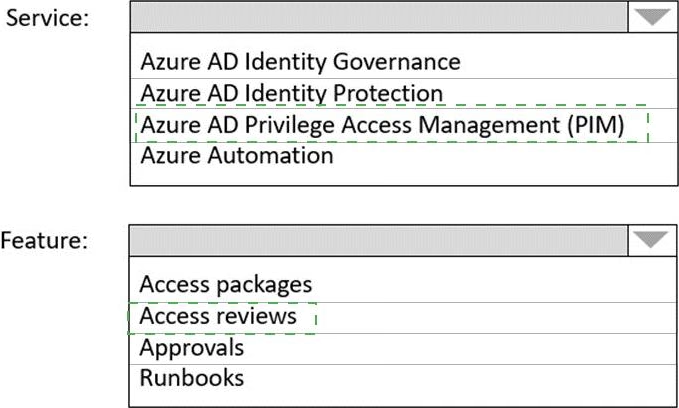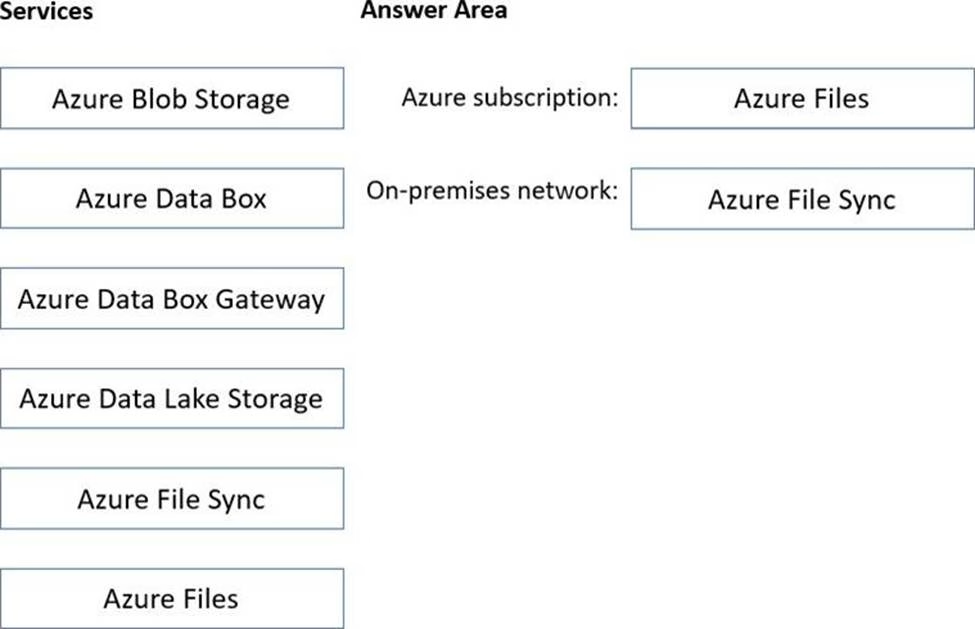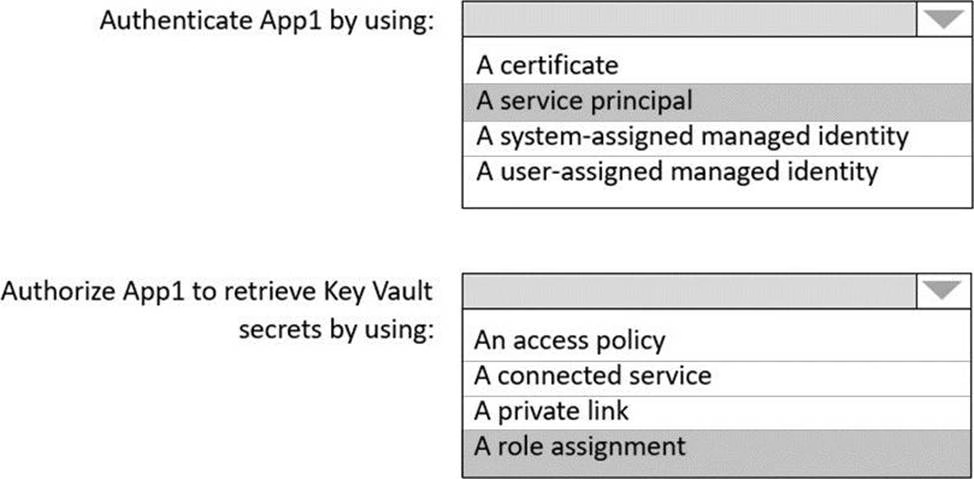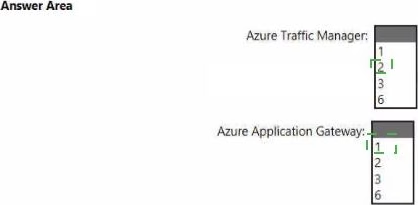Microsoft AZ-305 Designing Microsoft Azure Infrastructure Solutions Online Training
Microsoft AZ-305 Online Training
The questions for AZ-305 were last updated at Feb 20,2025.
- Exam Code: AZ-305
- Exam Name: Designing Microsoft Azure Infrastructure Solutions
- Certification Provider: Microsoft
- Latest update: Feb 20,2025
Topic 3, Contoso
Case Study
Overview
This is a case study. Case studies are not timed separately. You can use as much exam time as you would like to complete each case. However, there may be additional case studies and sections on this exam. You must manage your time to ensure that you are able to complete all questions included on this exam in the time provided.
To answer the questions included in a case study, you will need to reference information that is provided in the case study. Case studies might contain exhibits and other resources that provide more information about the scenario that is described in the case study. Each question is independent of the other questions in this case study.
At the end of this case study, a review screen will appear. This screen allows you to review your answers and to make changes before you move to the next section of the exam. After you begin a new section, you cannot return to this section.
To start the case study
To display the first question in this case study, click the Next button. Use the buttons in the left pane to explore the content of the case study before you answer the questions. Clicking these buttons displays information such as business requirements, existing environment, and problem statements. If the case study has an All Information tab, note that the information displayed is identical to the information displayed on the subsequent tabs. When you are ready to answer a question, click the Question button to return to the question.
Existing Environment: Technical Environment
The on-premises network contains a single Active Directory domain named contoso.com.
Contoso has a single Azure subscription.
Existing Environment: Business Partnerships
Contoso has a business partnership with Fabrikam, Inc. Fabrikam users access some Contoso applications over the internet by using Azure Active Directory (Azure AD) guest accounts.
Requirements: Planned Changes
Contoso plans to deploy two applications named App1 and App2 to Azure.
Requirements: App1
App1 will be a Python web app hosted in Azure App Service that requires a Linux runtime.
Users from Contoso and Fabrikam will access App1.
App1 will access several services that require third-party credentials and access strings.
The credentials and access strings are stored in Azure Key Vault.
App1 will have six instances: three in the East US Azure region and three in the West Europe Azure region.
App1 has the following data requirements:
✑ Each instance will write data to a data store in the same availability zone as the instance.
✑ Data written by any App1 instance must be visible to all App1 instances.
App1 will only be accessible from the internet. App1 has the following connection requirements:
✑ Connections to App1 must pass through a web application firewall (WAF).
✑ Connections to App1 must be active-active load balanced between instances.
✑ All connections to App1 from North America must be directed to the East US region. All other connections must be directed to the West Europe region.
Every hour, you will run a maintenance task by invoking a PowerShell script that copies files from all the App1 instances. The PowerShell script will run from a central location.
Requirements: App2
App2 will be a NET app hosted in App Service that requires a Windows runtime.
App2 has the following file storage requirements:
✑ Save files to an Azure Storage account.
✑ Replicate files to an on-premises location.
✑ Ensure that on-premises clients can read the files over the LAN by using the SMB protocol.
You need to monitor App2 to analyze how long it takes to perform different transactions within the application. The solution must not require changes to the application code.
Application Development Requirements
Application developers will constantly develop new versions of App1 and App2.
The development process must meet the following requirements:
✑ A staging instance of a new application version must be deployed to the application host before the new version is used in production.
✑ After testing the new version, the staging version of the application will replace the production version.
✑ The switch to the new application version from staging to production must occur without any downtime of the application.
Identity Requirements
Contoso identifies the following requirements for managing Fabrikam access to resources:
✑ uk.co.certification.simulator.questionpool.PList@1863e940
✑ The solution must minimize development effort.
Security Requirement
All secrets used by Azure services must be stored in Azure Key Vault.
Services that require credentials must have the credentials tied to the service instance. The credentials must NOT be shared between services.
HOTSPOT
What should you implement to meet the identity requirements? To answer, select the appropriate options in the answer area. NOTE: Each correct selection is worth one point.
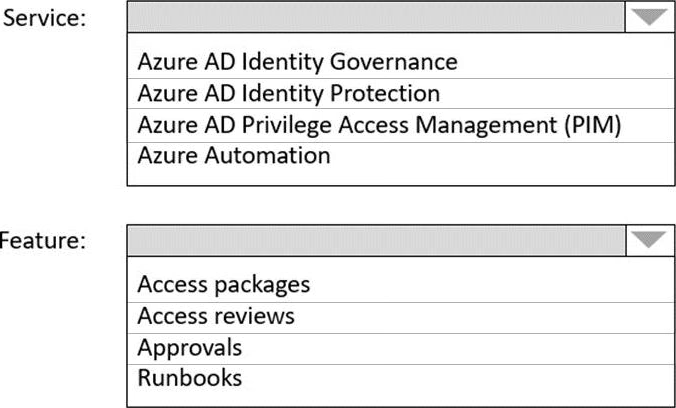
DRAG DROP
You need to recommend a solution that meets the file storage requirements for App2.
What should you deploy to the Azure subscription and the on-premises network? To answer, drag the appropriate services to the correct locations. Each service may be used once, more than once, or not at all. You may need to drag the split bar between panes or scroll to view content. NOTE: Each correct selection is worth one point.
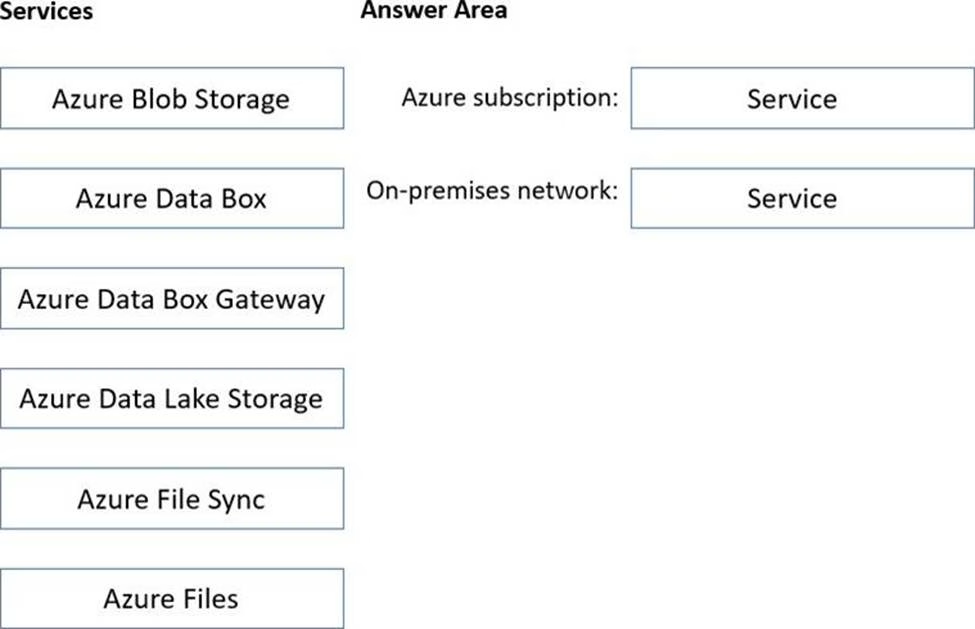
You need to recommend a solution that meets the data requirements for App1.
What should you recommend deploying to each availability zone that contains an instance of App1?
- A . an Azure Cosmos DB that uses multi-region writes
- B . an Azure Data Lake store that uses geo-zone-redundant storage (GZRS)
- C . an Azure SQL database that uses active geo-replication
- D . an Azure Storage account that uses geo-zone-redundant storage (GZRS)
HOTSPOT
You need to recommend a solution to ensure that App1 can access the third-party credentials and access strings. The solution must meet the security requirements.
What should you include in the recommendation? To answer, select the appropriate options in the answer area. NOTE: Each correct selection is worth one point.
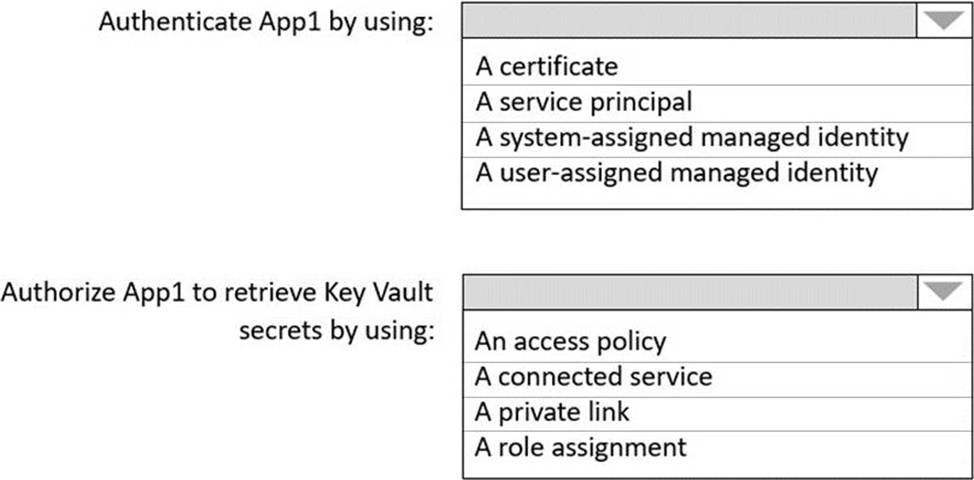
You need to recommend an App Service architecture that meets the requirements for Appl. The solution must minimize costs.
What should few recommend?
- A . one App Service Environment (ASE) per availability zone
- B . one App Service plan per availability zone
- C . one App Service plan per region
- D . one App Service Environment (ASE) per region
You need to recommend a solution that meets the data requirements for App1.
What should you recommend deploying to each availability zone that contains an instance of App1?
- A . an Azure Cosmos DB that uses multi-region writes
- B . an Azure Storage account that uses geo-zone-redundant storage (GZRS)
- C . an Azure Data Lake store that uses geo-zone-redundant storage (GZRS)
- D . an Azure SQL database that uses active geo-replication
HOTSPOT
You are evaluating whether to use Azure Traffic Manager and Azure Application Gateway to meet the connection requirements for App1.
What is the minimum numbers of instances required for each service? To answer, select the appropriate options in the answer area. NOTE: Each correct selection is worth one point.
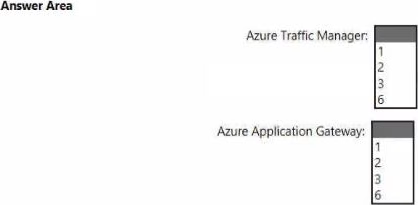
You need to recommend a solution that meets the application development requirements.
What should you include in the recommendation?
- A . an Azure Container Registry instance
- B . deployment slots
- C . Continuous Integration/Continuous Deployment (CI/CD) sources
- D . the Azure App Configuration service
What should you recommend lo meet the monitoring requirements for App2?
- A . Azure Application Insights
- B . Container insights
- C . Microsoft Sentinel
- D . VM insights
You need to recommend a solution that meets the application development requirements.
What should you include in the recommendation?
- A . the Azure App Configuration service
- B . Continuous Integration/Continuous Deployment (CI/CD) sources
- C . deployment slots
- D . an Azure Container Registry instance
Latest AZ-305 Dumps Valid Version with 78 Q&As
Latest And Valid Q&A | Instant Download | Once Fail, Full Refund

